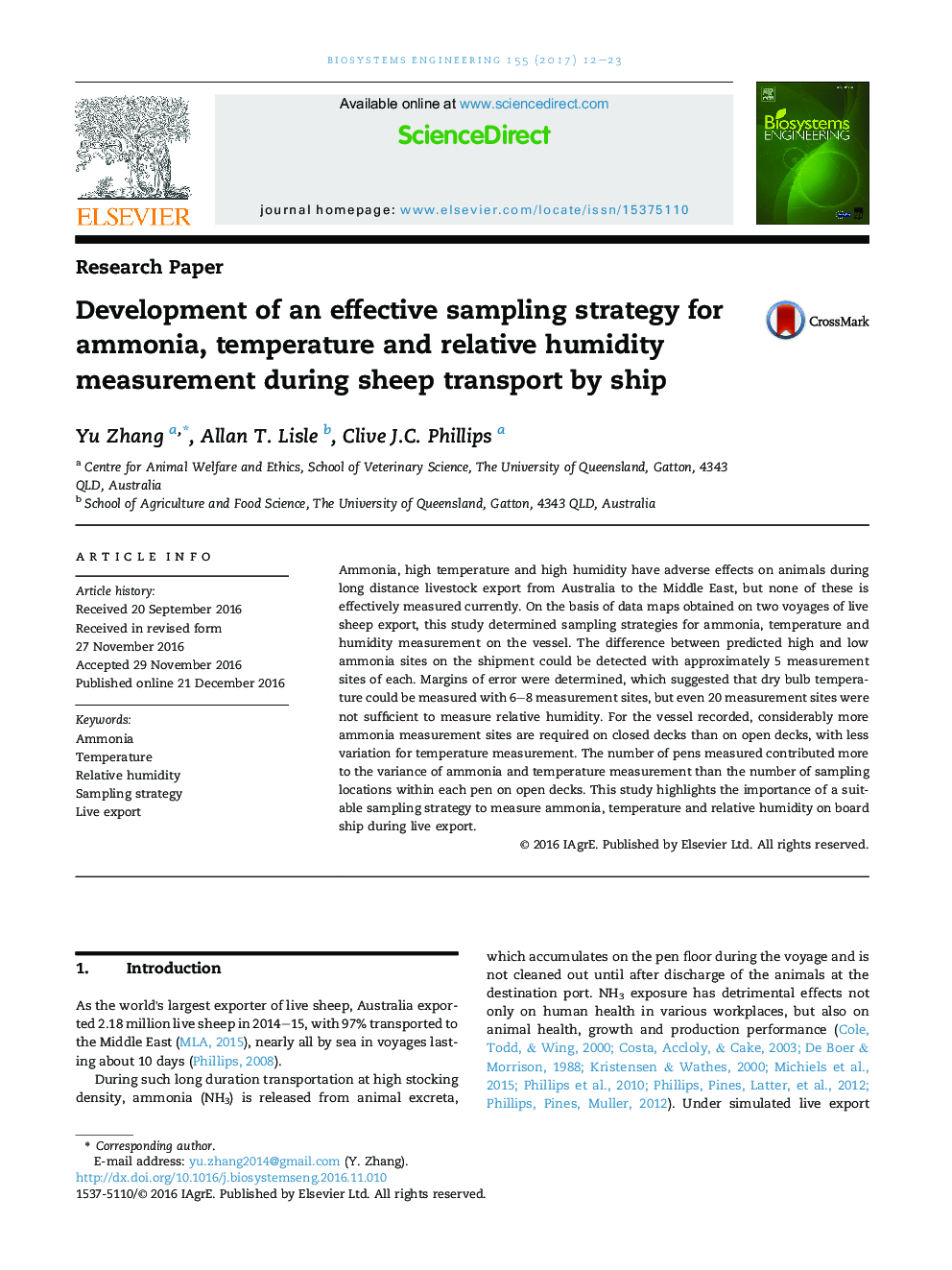| Article ID | Journal | Published Year | Pages | File Type |
|---|---|---|---|---|
| 5471941 | Biosystems Engineering | 2017 | 12 Pages |
â¢A strategy to sample environmental parameters on a livestock ship was developed.â¢High and low ammonia sites could be differentiated with 5 measurements of each.â¢Dry bulb temperature could be evaluated with 6-8 measurements.â¢Twenty measurements were not sufficient to measure relative humidity.â¢These results could help improve the ship environment for sheep in live export.
Ammonia, high temperature and high humidity have adverse effects on animals during long distance livestock export from Australia to the Middle East, but none of these is effectively measured currently. On the basis of data maps obtained on two voyages of live sheep export, this study determined sampling strategies for ammonia, temperature and humidity measurement on the vessel. The difference between predicted high and low ammonia sites on the shipment could be detected with approximately 5 measurement sites of each. Margins of error were determined, which suggested that dry bulb temperature could be measured with 6-8 measurement sites, but even 20 measurement sites were not sufficient to measure relative humidity. For the vessel recorded, considerably more ammonia measurement sites are required on closed decks than on open decks, with less variation for temperature measurement. The number of pens measured contributed more to the variance of ammonia and temperature measurement than the number of sampling locations within each pen on open decks. This study highlights the importance of a suitable sampling strategy to measure ammonia, temperature and relative humidity on board ship during live export.
